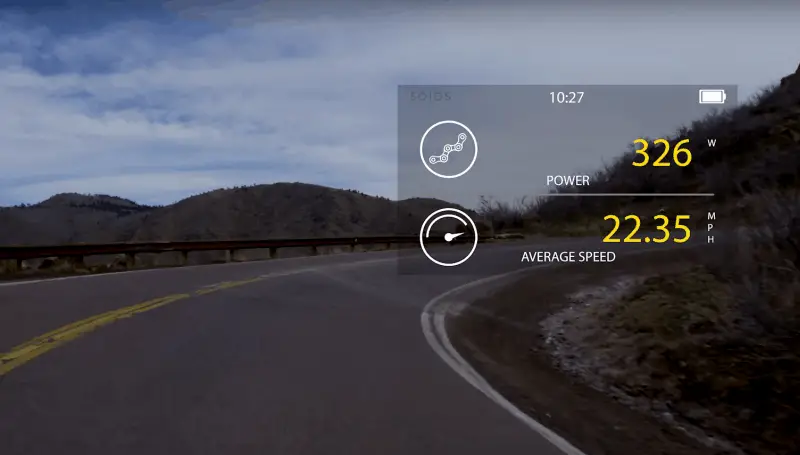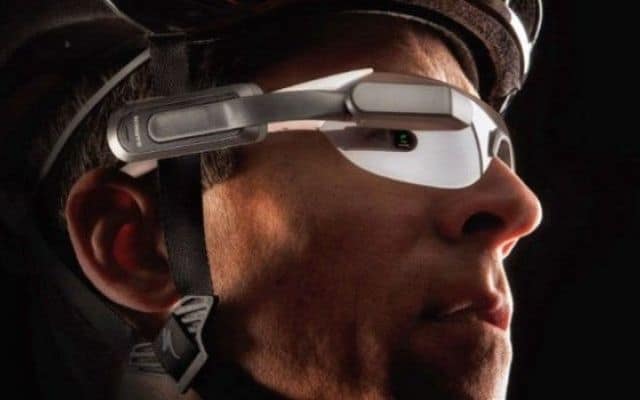Are you looking for ways to improve your cycling experience and/or performance? Cycling smart glasses might just be thing to help you with that.
In this article we are first going to have a look at what cycling smart glasses are and what they can actually do for you. We are then going to review and compare three quite different products that are currently available in the market.
Finally we are going to try to understand if you are the kind of rider who would potentially benefit from smart glasses.
What Can Cycling Smart Glasses Do?
Let’s first start with the basics. Like regular cycling glasses, the smart ones also help you keep various flying objects like bugs and debris out of your eyes. You don’t want to be blinking and rubbing your eyes after receiving an unwanted guest, right?
Cycling glasses are also good for sunny weathers. In addition to UV protection, dimmed lenses help you stop squinting and see where you are going.
Another problem for cyclists is that often times their eyes tend to get either too dry or watery when riding without glasses. This is because the front layer of the eye (cornea) is very sensitive to excessive airflow and changes in temperature. Glasses help you cover eyes and reduce the irritation.
However, you can get all the mentioned benefits from regular cycling glasses. The main unique benefit of smart cycling glasses is the ability to gather various riding metrics from bike sensors, heart monitor, etc and display them right in front of your eyes.
It is possible set various targets and predefined programs for you training sessions and monitor your performance in real-time. No need to take eyes of the road. You can put your full effort and focus into riding.
Smart Glasses vs Cycling Computer
You might ask, why not simply use a cycling computer? That is a valid question indeed. Cycling computers can collect information from different sensors and display the metrics to you while you are riding. After all, this is what they are made for.
There are some pros in favor of glasses. Like mentioned earlier, with smart glasses you don’t have to take your eyes off the road or adjust your riding position. The information is there for you all the time when you need it.
Smart glasses also have a bigger display area compared to most cycling computers. This means you can get more metrics simultaneously in your view to act upon. Less need to click between different views to get the information you want.
An added bonus for smart glasses is that several of them are also voice controllable. Start/stop the ride, switch between metrics and make calls are some of the actions possible by voice control.
Some smart glasses also have an integrated camera. You can take photos and videos of your ride and capture moments that would otherwise be lost.
These were some benefits specific to smart glasses. Next are going to look at three different smart glasses available on the market and see what each of them can do.
Everysight Raptor
These slightly futuristic-looking cycling glasses are actually a separate computer unit packed into the shape and frame of glasses. The Raptor has Qualcomm CPU, 2GB SDRAM, 16GB/32GB file storage option, GPS device and runs on Android operating system.

The high brightness BEAM display projector is built into the glasses of the device. There is no display screen visible to the outer world and only you can see the information being displayed. The lenses are switchable and you can also use prescription ones.
Adjusting the screen can be done using two methods:
- Physically adjust the placement of the glasses via the nose bridge of the glasses
- Positioning using app (you can also change size)
It is possible to see up to 5 simultaneous different metrics (time, distance, power, cadence, speed, etc) while wearing the glasses. All the metrics are configurable, so that you can set to see information that is needed for your riding purposes.
If you want to get an idea about how riding with the Raptor glasses would actually look and feel in real life, Everysight has developed a “demo ride” experience application for that on their home page.
Sensors and devices, to retrieve the metrics, can be connected to the Raptor both via Bluetooth as well as ANT+ protocol.
The glasses have speakers on both sides of the frames which you can use for ride statistics or just for listening music. There is also a microphone built into the glasses to use voice commands (and make phone calls for example).
In addition to voice commands, you can control the device via the right arm of the glasses. By tapping and swiping it is possible to navigate through menu, change views, etc.
The glasses have a built in 1080p camera, which you can use to take photos as well as videos. The quality is probably not quite what you would expect from 1080p, but still reasonably good.
Solos
With the Raptor, we were dealing with a unit with its own “brain and heart” that could function alone. This is not the case with Solos smart glasses which require your mobile phone + app to function. The glasses do the displaying part.

If we were to be precise here, the glasses are really not “smart”. Instead they are a heads-up display that connect to your mobile via Bluetooth. The app running on your phone controls all the features plus gathers and processes the data from different sensors.
The screen in this case is a small micro display in front of the right eye, that sits on an adjustable arm. You can use the arm to move screen away or closer to your right eye. Sometimes, when the road is bumpier the screen can disappear and you need to readjust on the go (which is luckily easy to do).
Like with the Raptor, you can use Bluetooth and ANT+ protocol to connect different sensors to the glasses. By using the Solos app, it is possible to configure what metrics and where you want to be displayed.

The glasses have three general purpose buttons that you can control the device with. In addition there are dual built in microphones, which can be used for voice commands. There are also built-in speakers, so you choose to play music, or hear voice notifications about your workout.
Garmin Varia Vision
The third device which I am covering in this article is Garmin Varia Vision. It is quite different from both the Raptor as well as Solos.
In the most general form, it is a secondary heads-up display for your Garmin bike computer (or similar Garmin device) that attaches to your regular cycling glasses. It can not function on its own (doesn`t have GPS and can not connect to sensors).

Varia Vision can be placed either in front of your left or right eye, using the highly configurable and brilliantly simple mount system. You can then pair the Vision with your existing Garmin device to be used as a remote display.
The display is visually sharp and has good color contrast. You can use it to display all the information that your current Garmin bike computer (and sensors) support.
In addition to displaying configurable metrics and ride details, the Vision can display notifications about incoming calls/messages, training session performance alerts and also GPS navigation bearings.
The Vision is controllable via the on/off button located on top of the device and you can switch between different views using the swipe touchpad on the side of the device.
Comparison
Next we are going take different physical and functional parameters of the three devices and compare them.
| Raptor | Solos | Varia Vision | |
| Device type | Standalone unit with CPU, RAM. Android OS | Heads-up display, phone and app required to work | Heads-up display for Garmin devices |
| Weight | 3.46 oz (98 g) | 2,29 oz (65 g) | 1,1 oz (29,7 g) |
| Display Type | BEAM Display Projector within glasses | External Widescreen WQVGA 16:9 micro display | External microdisplay attached to glasses |
| Occular Placement | Right eye | Right eye | Right / Left eye |
| Controlling Device | Voice command, touch control on side, bar mounted control option | Voice command, 3 input buttons | Touch control on side, On/Off button |
| On Screen Information | 5 metrics | 1-4 metrics | 1-4 metrics |
| Comfort, portability | Foldable | Not Foldable | Really small on its own |
| Navigation | Route, elevation, navigation arc | Only one with address search | Compass and bearing. Does not show map |
| Camera | 13,2 MP, 1080p | – | – |
| Battery | Up to 8 h | Up to 6h | Up to 8h |
| Sensor Connectivity | Bluetooth, ANT+ | Bluetooth, ANT+ | Bluetooth, ANT+ (on connected Garmin device) |
| Training and coaching | Training, coaching, workout features | Training, coaching, workout features | – |
| Price | ~ 850$ at Everysight | Check latest price (Amazon) | 399$ at Garmin |
Are Cycling Smart Glasses For You?
Smart glasses for cycling that are currently available are really not something you would call cheap. But are they worth the price and should you buy them?
It really depends.
The truth is, they probably add too little value (for the price) to your average rider who really does not care about data (and does not act upon it). Sure you can still buy them if you like gadgets and have money to spare.
However, for the hardcore enthusiast, who already owns several sensors, monitors and analyzes his/her training sessions closely, they just might be worth it. Having real-time metrics, session details and targets displayed in your view, can help you get maximum out of your training sessions.
It is also possible to prepare your workouts and training beforehand, set target goals and benchmark against your previous rides. All this is beneficial and can help you become a better rider.
